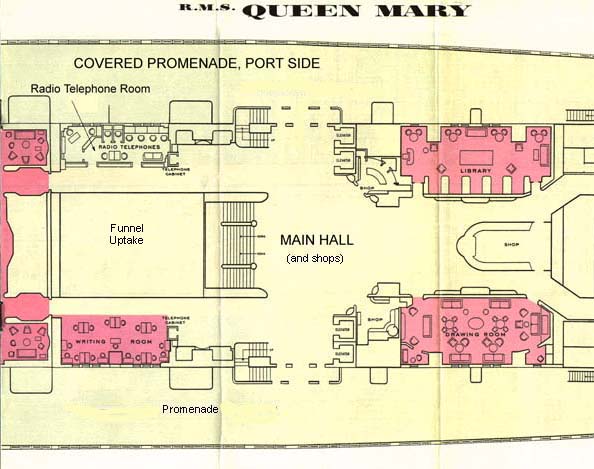
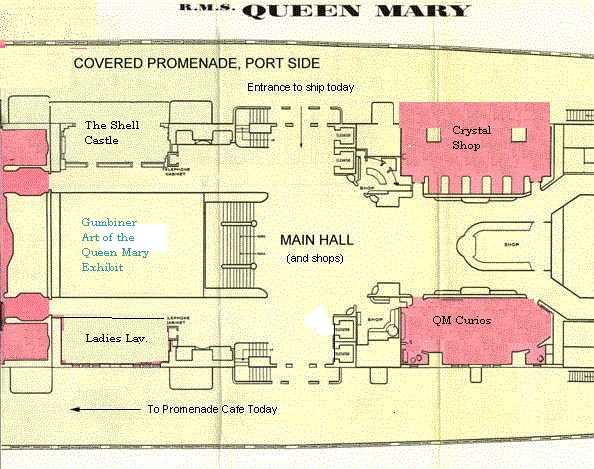
1947-1967 arrangement of rooms, and today's layout


1947-1967 arrangement of rooms, and today's layout
The Radio Telephone Room was created in the postwar refit of the Queen Mary -- out of the port-side promenade deck writing room. In the pre-war period (1936-1939) there were a pair of open writing rooms for first class, (then called cabin class), adjacent to the second funnel uptake along the corridors leading to the main lounge. The rooms are opposite each other on the plan above.
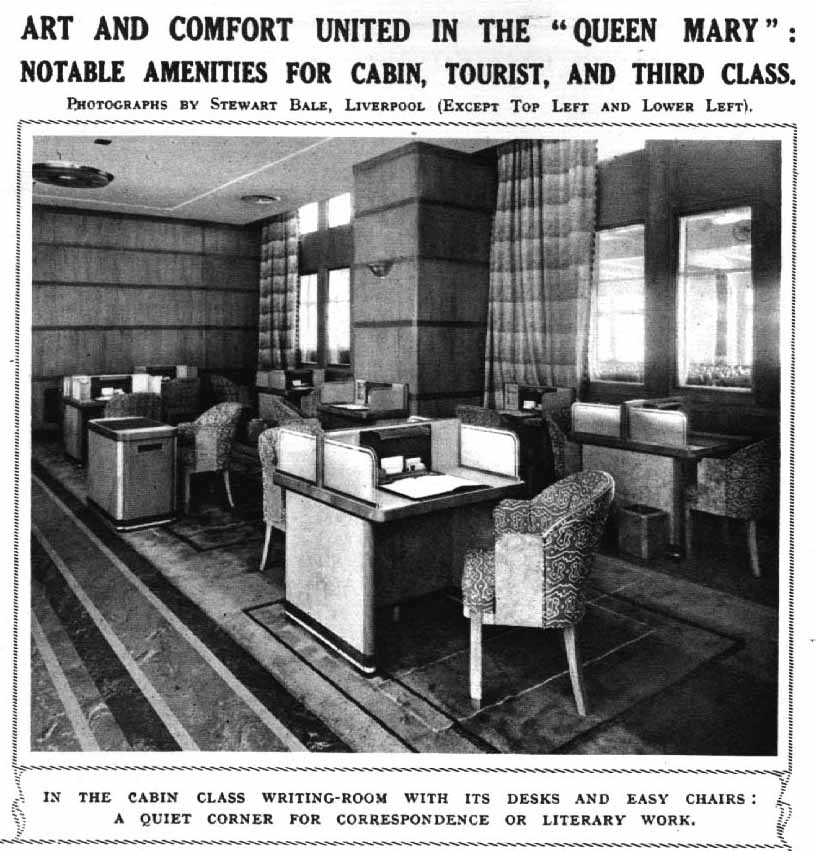
Port Side writing room before conversion into Radio-Telephone Room
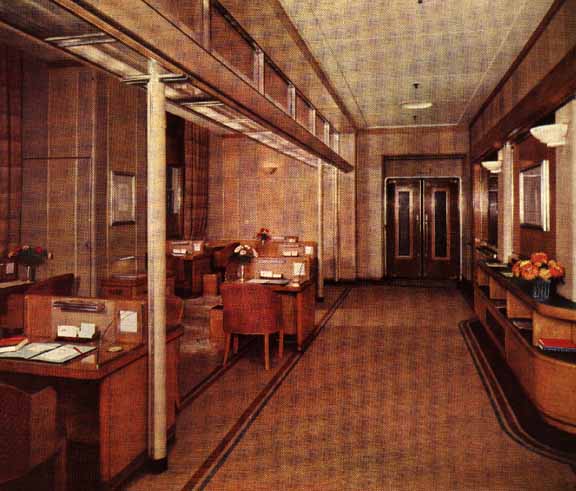
Starboard writing room (post war decor).
In the refit, both rooms were partially enclosed with etched glass panels defining the
rooms at the ceiling level. The starboard writing room retained its original function, but
the port-side writing room was enclosed and converted to a passenger radio telephone room.
The etched glass panels that were added over the starboard writing room depict the various
modes of writing through the ages and those added over the port side writing room (the one
that was converted into the Radio Telephone Room) depict the various modes of
communications used through the age. The Queen Mary's building job number "534"
is incorporated into the design of one of the glass panels over the Radio Telephone Room.
Both sets of glass panels in both rooms survive in situ today, however the starboard writing room was gutted and converted into a ladies room in the Long Beach conversion.
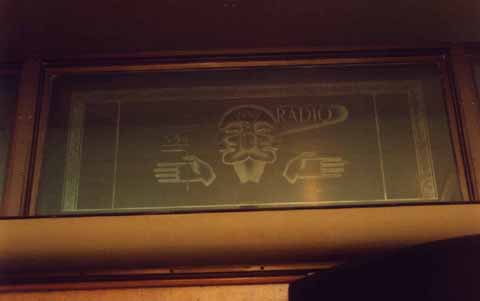
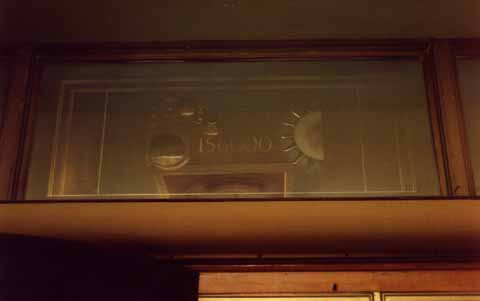
Two of the panels left outside the ex-Radio Telephone room today. The left panel shows the word "Radio", and the right the figures "186,000", the speed of light (and Radio waves) in miles per second.
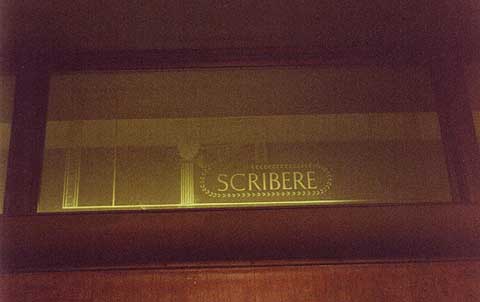
One of the starboard writing room panels shows the word "Scribere" - which means "to write" in Latin.
The wooden paneled walls in both areas were covered with the two-tone gray leather used in the Main Hall refit after the Second World War.
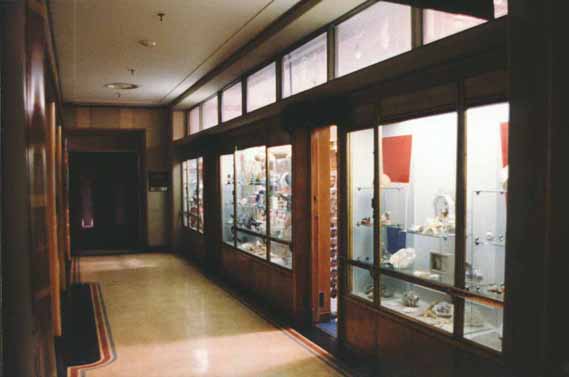
The corridor next to the room today, looking aft
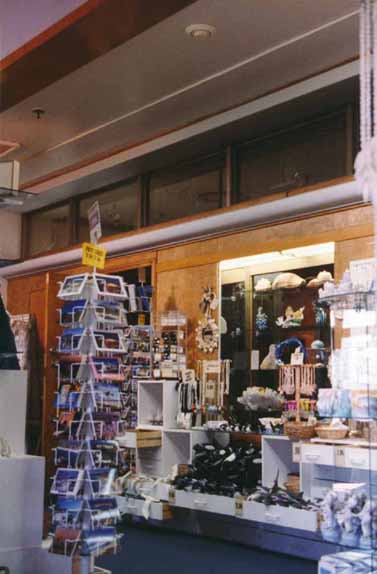
The glass paneling, seen from inside the shop.
The radio telephone room was available to first class passengers only to make
ship-to-shore telephone calls and send telegrams.
History of Use
1936 - 1939 The room was used as a writing room in the pre-war period.
1940 - 1947 Ship converted for troop-carrying use.
1947 - 1967 In the postwar refit, this room was converted into a radio telephone
room for first class passengers as described above. It retained this function until the
Queen Mary came to Long Beach in 1967.
1968 - to present day
In the Long Beach conversion, the outboard wall was demolished and this room was expanded
onto the sheltered promenade deck. It was assigned use as a retail shop. In the 1980s, a
toy and hobby shop was installed here. Currently a tourist shop specializing in sea shell
souvenirs is the lessee, the shop being called "The Shell Castle".
Potential for future restoration and re-use - William Cwiklo examines the
possibilities.
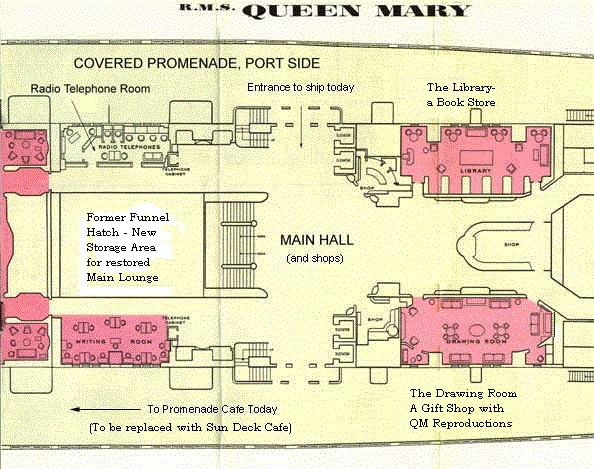
A possible future configuration of this area
Three of the walls and the ceiling are original to this room. While the paneling has
been damaged by casual use and abuse, (i.e. tacking up merchandise and displays on an ad
hoc basis), the core of the room remains. The cabinets for forms and the vacuum tube
mechanism for telegrams (and payments?) remain in the aft-end wall.
This next picture shows the interior of the shop today. The time-zone clocks even are
still on the wall from the days when this room was a communications center.
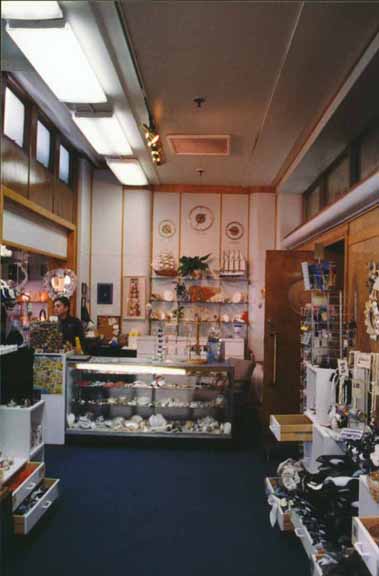
![]() Return to Index by Deck
Return to Index by Deck
![]() Return to
Index by Class of Accommodations
Return to
Index by Class of Accommodations